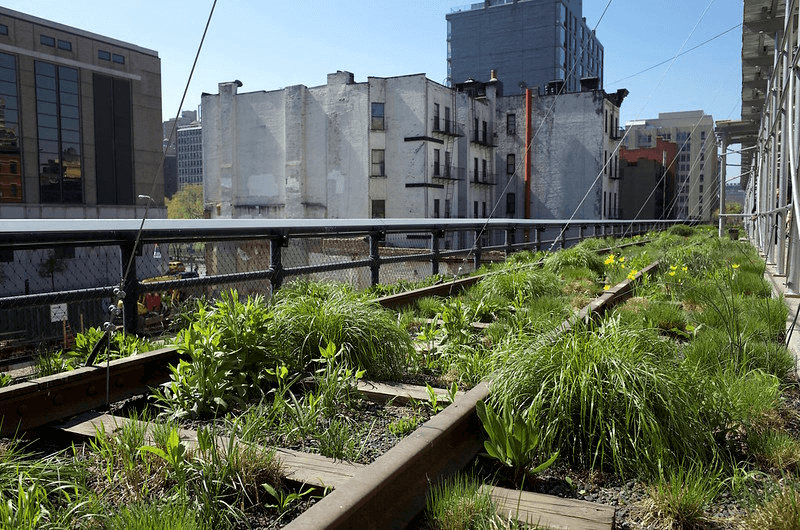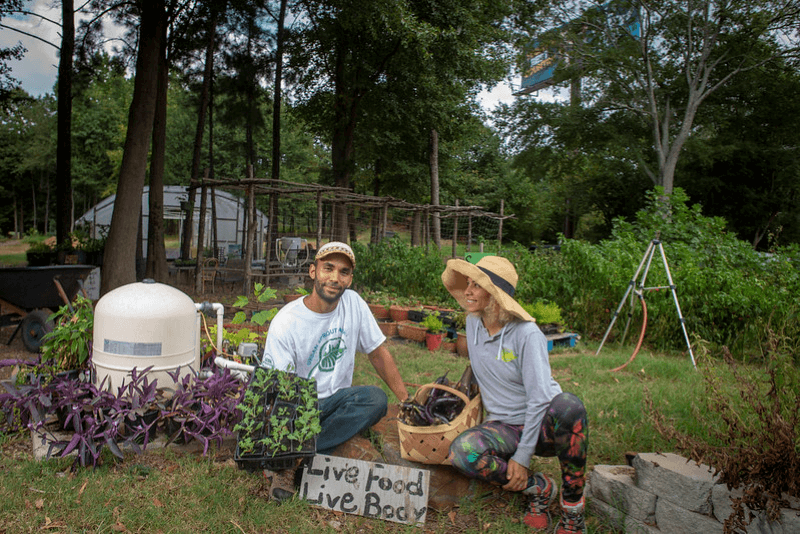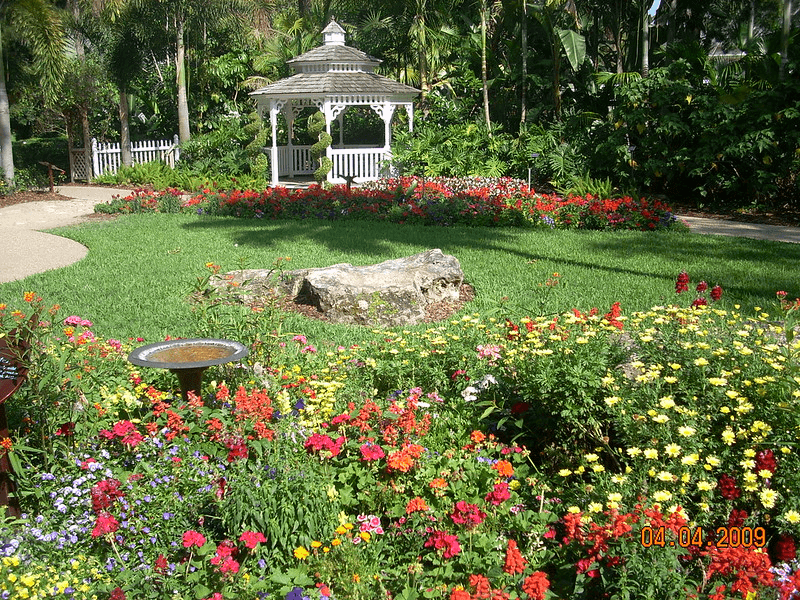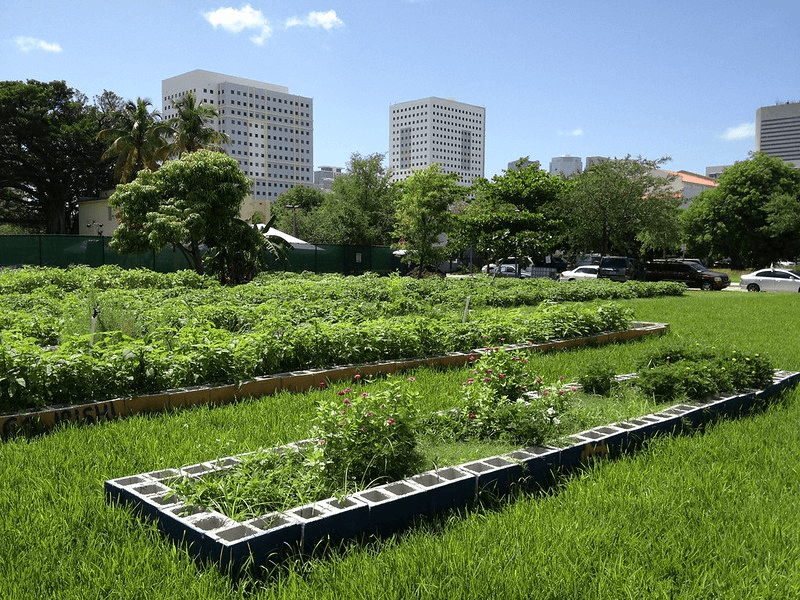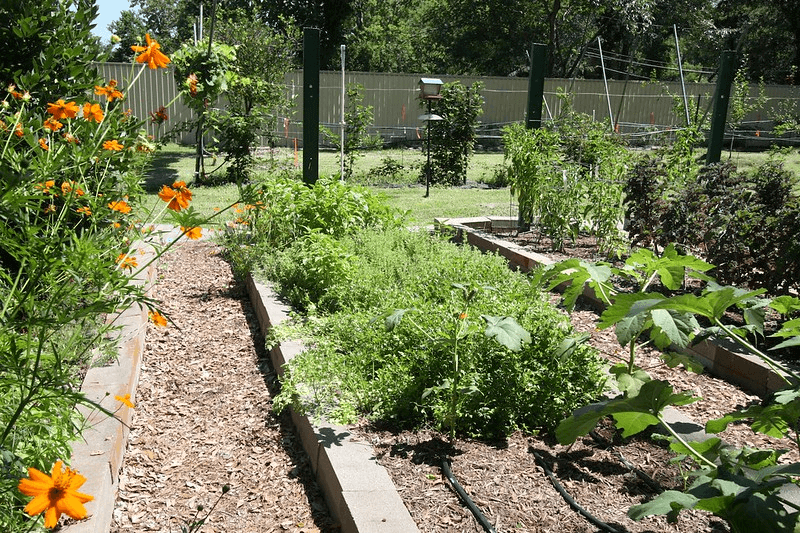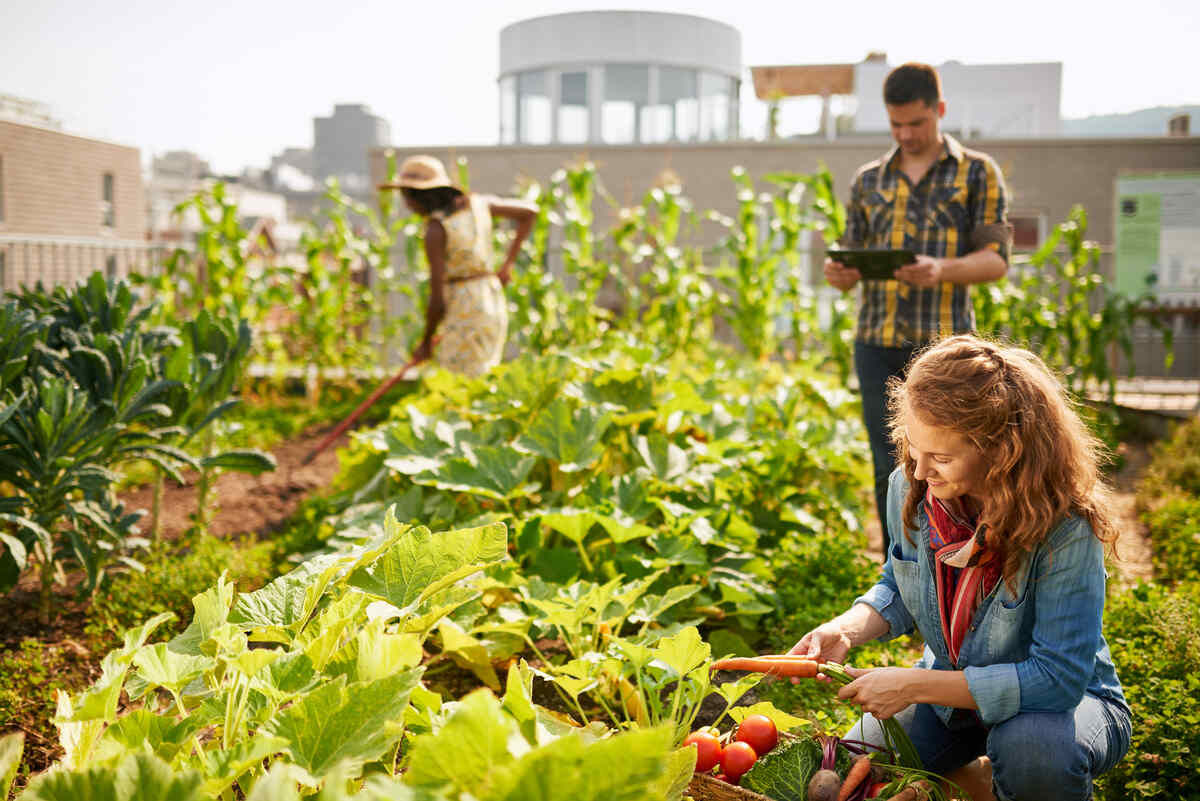
Where can urban gardeners grow a bountiful harvest?
To find out, LawnStarter ranked 2025’s Best Cities for Urban Gardening.
We scored the 500 biggest U.S. cities based on 14 metrics, including climate conditions, access to community gardens and food forests, and garden nurseries.
Some interesting stats:
🥬 About 60% of the cities in our ranking have access to a public community garden.
🌳 8.8% of the ranked cities are growing a community food forest.
🍅 Room to Grow: 0.2 acres is the average yard size across the 500 biggest U.S. cities.
Dig through our ranking below. To learn how we ranked the cities, see our methodology.
Contents
- Top 5 U.S. Cities for Urban Gardening
- Urban Gardening City Rankings
- Key Insights
- Metric Highlights
- Ask the Experts
- Methodology
- Harvest Knowledge: Growing Your Green Thumb
Top 5 U.S. Cities for Urban Gardening
Check out the slideshow below for highlights and local tips for each of our top 5 cities for urban gardening.
Urban Gardening City Rankings
See how each city fared in our ranking:
Key Insights
New York (No. 1) tills the competition with the most community gardens — 780, according to the American Community Gardening Association. The next-highest number can be found in Atlanta (No. 2), growing 123.
44 cities, including smaller communities like Evanston, Illinois (No. 11), Roanoke, Virginia (No. 69), and Iowa City, Iowa (No. 121), are branching out with community food forests. Food forests are growing in popularity across the U.S. as a form of urban agroforestry, providing a space for locals to forage through bushes and trees for fresh produce.
Big cities in North Carolina have among the best yard potential for backyard urban gardening. Greenville (No. 197), Asheville (No. 64), Winston-Salem (No. 88), Greensboro (No. 66), and Durham (No. 159) all land among the top 100 cities with the biggest yards.
Infographic: Metric Highlights
Ask the Experts
Growing your own food is certainly rewarding, but developing your green thumb as a beginner can be tricky.
We turned to a panel of experts to help sprouting gardeners navigate the urban garden landscape. Read through their insights below.
- Besides sheer pleasure, what are the top 3 benefits of gardening?
- What are your top 3 tips for first-time gardeners?
- For those who live in big cities with few or no community gardens, what are the best alternatives?
- What are the benefits of a community food forest? How can folks help get one started in their neighborhood?
- What are the 3 best produce options for growing an indoor garden?






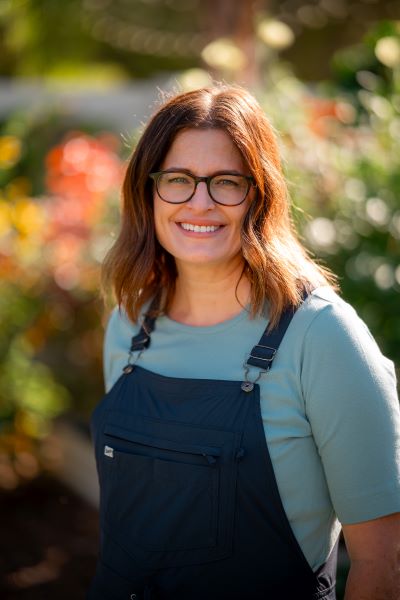




Besides sheer pleasure, what are the top 3 benefits of gardening?
Gardening is great physical exercise. Ornamental gardens provide spaces you can enjoy outdoors, and vegetable gardens provide great access to healthy food.
What are your top 3 tips for first-time gardeners?
- Use plants in masses; don’t plant just one.
- Pay attention to the soil; everything starts there. If your soil is not healthy (loose and rich, moist enough but not wet) your plants won’t do well.
- Pick plants that flower or fruit over a period of time. Don’t go to the garden center and pick everything that is blooming now. You want to have extended interest in your garden and food to harvest throughout the year.
For those who live in big cities with few or no community gardens, what are the best alternatives?
You can garden in containers on balconies or on the roof (if it is flat).
What are the benefits of a community food forest? How can folks help get one started in their neighborhood?
A CFF is usually comprised of perennial plants that are permanent components of a landscape. This would include perennial herbaceous plants like asparagus, strawberries, blackberries, etc. It could also include fruit and nut trees (paw paws, pecans, peaches, apples…depending on the climate). These plants provide the benefits of green infrastructure in a city (urban cooling, water management, etc.) and additionally provide food for harvest.
To start a food forest in a neighborhood, begin by finding available land. Communities create gardens like this best when organized from within. Then, seek outside expertise from a greening organization, cooperative extension system, or a university.
What are the three best produce options for growing an indoor garden?
- Herbs can be grown indoors fairly easily.
- Lettuces also work well indoors.
- Tomatoes can be grown under lights or on a balcony.

Besides sheer pleasure, what are the top 3 benefits of gardening?
- Improved Mental Health: Gardening reduces stress, anxiety, and depression. It offers a calming, mindful activity that connects people with nature and provides a sense of purpose.
- Access to Fresh, Healthy Food: Growing your own fruits, vegetables, and herbs means better nutrition and food security, especially in areas with limited access to fresh produce.
- Environmental Impact: Gardens support pollinators, improve air and soil quality, and reduce urban heat. They help create greener, more sustainable neighborhoods.
What are your 3 tips for first-time gardeners?
- Start Small and Simple. Choose a few easy-to-grow plants like tomatoes, lettuce, or herbs. You’ll build confidence and learn as you go.
- Know Your Zone and Sunlight. Understand your growing zone and choose plants that thrive there. Watch how much sunlight your space gets each day.
- Feed the Soil, Not Just the Plant: Healthy soil is key. Add compost, mulch, and organic matter to give your garden strong roots from the start.
For those who live in cities with few or no community gardens, what are the best alternatives?
- Container and Balcony Gardens: Grow herbs, greens, and tomatoes in pots on balconies, windowsills, or rooftops.
- Join or Start a Garden Club. Connect with others to share seeds, supplies, and knowledge, even if you’re growing separately.
- Advocate for New Spaces. Partner with local schools, churches, or libraries to propose starting a shared garden space in unused lots or green areas.
What are the benefits of community food forests? How can folks help get one started in their neighborhood?
- They provide free, perennial food (like fruit, nuts, and berries) for the community.
- They support biodiversity and climate resilience.
- They create educational spaces for youth and adults to learn about ecology and sustainability.
How to start a community food forest:
Organize a Team. Bring together neighbors, gardeners, educators, and local leaders.
Choose a Site. Identify public or shared land that can be transformed.
Get Support. Work with city planners, nonprofits, or parks departments for approvals, design help, and funding.
Plan and Plant. Design for multiple layers (trees, shrubs, ground covers) and long-term maintenance.
What are the 3 best produce options for growing an indoor garden?
- Herbs: Basil, mint, parsley, and chives grow well in sunny windowsills or under grow lights.
- Leafy Greens: Lettuce, arugula, and spinach are fast-growing and compact, ideal for containers indoors.
- Cherry Tomatoes or Peppers. These fruiting plants do well in pots with enough light and are rewarding to harvest right from your home.

What are the top 3 benefits of gardening?
1. For me, the biggest benefit of gardening is being close to the earth and witnessing the miracle of life up close. Until you have your hands in the soil and watched a seed transform into a flower, fruit, or vegetable, you haven’t lived.
2. After that, I love the sheer beauty of God’s creation, flowers especially. I love all flowers and if you ask me what my favorite flower is, I really can’t say. It would be like asking me to choose which of my children I love best.
3. Probably the best reason that I garden is to create a habitat for the birds and pollinators. The birds are in trouble. Do you know that all birds need caterpillars to feed their young? Insects are very important for birds. We must better understand the interconnectedness of life. We truly are all connected.
Read more here: There’s a Party Going On in That Soil!
What are my top 3 tips for first-time gardeners?
1. When I owned my garden center for 21 years, I used to always tell my customers that we can’t buy back time, so plant that tree now! Don’t wait, and don’t overthink it. Just plant the right tree in the right place and many of them.
2. When planting, never plant deeper than it was in that pot. The biggest cause of tree/shrub/plant death is being planted too deeply. Even 1-2 inches too deep may be enough to rot the trunk because of the soil moisture. If anything, plant it one inch higher than the pot, to allow for settling and mulch.
3. The third tip is similar. Never mulch up against the trunks of anything. Keep the mulch outside of the root ball area. Mulch placed against the trunk or mounded will cause the demise of that plant due to fungal diseases.
For more information, see How to Grow a Forest – My 25 Year Experiment.
For those who live in big cities with few or no community garden, what are the best alternatives?
I have had my share of living in apartments and places where I can’t garden much outside. But that never stopped me from having houseplants, balcony plants or even planting around the grounds of the apartment or condo areas, if they would allow me.
It’s easy to take a large pot and plant it with what you like. Do you like fresh herbs? Plant those. Do you like to attract butterflies? You can plant a wonderful butterfly garden in a pot. Do you like flowers? There are flowers for every season. Don’t let yourself be discouraged just because you don’t have a large area. I’ve seen fantastic balconies filled with all kinds of trees, teeming with life.
If you don’t have a balcony, then a windowsill of herbs may be just enough to take your cooking to the next level. And don’t forget houseplants, which will clean our indoor air. There are so many beautiful ones to choose from. No excuses!
What are the benefits of a community food forest? How can folks help get one started in their neighborhood?
I am really not an advocate for community gardens and I will tell you why. I have personally been involved in several over my 25-plus years of volunteerism, and as a Master Gardener. Usually, what happens is that they fall into disrepair and negligence, and they get torn down.
It takes dedication and knowledge to keep one going, and without it being part of a business or school, it’s hard to keep them going. Also, when they are on city property, oftentimes, the city will decide to take back the land they are lending to the garden, which is a big waste of time and money.
I think it’s far better to encourage homeowners to plant fruit trees and plant gardens in their own backyards, or if it’s a condo/apartment situation, encourage the HOA to allow fruit trees or some raised beds in a certain area.
This way, there is a personal investment and convenience in being able to maintain it. Growing trees is an investment in time, and they should be planted where they are allowed to mature and bear fruit.
What are the three best produce options for growing an indoor garden?
Indoors is a difficult scenario for growing produce. Probably the only thing that will grow well is microgreens or sprouts, and these are the most nutrient-dense foods there are. I would stick to these, and of course, grow some herbs on the windowsills if possible. During the summer months up north, put them outside, and maybe have a few pots of lettuce or other leafy greens, which are easiest to produce and are nutrient-dense.

Besides sheer pleasure, what are the top three benefits of gardening?
There are SO many wonderful reasons to grow your own food at home! As a top three, I would say:
- You are able to take control of the food you put in your body, knowing exactly where it came from and harvesting it at its peak ripeness and nutritional value.
- Tending to plants helps increase the amount of time spent outside, which is a great counteraction to stress and anxiety.
- There are SO many things you learn about yourself, others, and the world around you when you make spending time with your plants part of your personal routine. This practice can change your life in so many ways!
What are your top three tips for first-time gardeners?
- Make your plants part of your daily and weekly routine. Carve out time each day to water, tend to any needs, and harvest. The more time you spend with your plants, the more you will observe and learn!
- Make sure you plant vegetables, fruits, and herbs where you get the MOST sunlight. They’ll need at least 6 hours of direct sun each day to thrive.
- Use high quality soil and organic plants and seeds from independent nurseries and small businesses when you can.
For those who live in big cities with few or no community gardens, what are the best alternatives?
You can grow food at home in whatever size space you have. If you have room for a large pot on a patio, you can grow cherry tomatoes and basil or plant several perennial herbs, like rosemary, sage, thyme, oregano, chives, lavender, etc. for a one-pot herb garden.
In the spring and fall, swap the cherry tomatoes and basil for kale, spinach, lettuce, peas, or carrots. You can also grow food inside using hydroponics systems from companies like Lettuce Grow, AeroGarden, or Gardyn. These systems require special maintenance and often yield speedy harvests. Leafy greens and basil do best in hydroponics systems.
What are the benefits of a community food forest? How can folks help get one started in their neighborhood?
Community food forests are usually composed of perennial fruit and nut trees, herbs, and other edible crops that return year after year. These plants do not require a lot of time to tend and maintain, but they can take a while to get established and be productive.
As a community space, these food forests create a place to connect and gather with others who have a common interest. I would recommend reaching out to your local Cooperative Extension Office for help getting started with a community food forest. Every state has a Cooperative Extension program that supports community members with growing and cultivating food, plants, animals, etc. This program is typically associated with the land grant university in your state.
What are the three best produce options for growing an indoor garden?
Lettuce, basil, and kale.
Erin Hostetler is the owner and founder of The Patio Farmer in Charlotte, North Carolina.

Besides sheer pleasure, what are the top three benefits of gardening?
- Contributes to Wellness
Gardening exposes people to sunshine and soil. Recent studies have shown that exposure to the beneficial microbes in soil, like Mycobacterium vaccae, can support health and boost the mood. Gardening is also a way to relieve stress, practice mindfulness, and connect with the rhythms of nature, which is something lacking more in our digital age. - Positive Impact on the Environment
Home gardening helps reduce plastic waste and emissions. One example of this is how lettuce often travels thousands of miles in refrigerated trucks and is packaged in plastic containers. Another example is how organic garden soil will sequester carbon from the atmosphere, reducing the environmental impact. Imagine the positive environmental impact that would be made if every home had an organic garden in its yard! - Control Over Your Food
Growing your own food saves money, deepens the connection to what’s on your plate, and gives more control over how your food is grown. For example, by growing your own food, you can skip the pesticides that may be used by the agricultural industry, and you can grow more unique varieties than what is sold in grocery stores (like Sungold tomatoes). People also feel empowered when they can preserve the food they’ve grown by freezing, fermenting, canning, or dehydrating.
What are your top three tips for first-time gardeners?
- Choose the Best Location
Most fruiting vegetable,s like tomatoes, cucumbers, and beans, need 6–8 hours of full sun daily. For shadier spaces, leafy greens, kale, and spinach do better. Take time to observe your space throughout the day to find the most suitable location for what you are planting. - Know the Seasons
Knowing what plants do best in what season is the key to success! Cool-season crops, like lettuce, broccoli, peas, and carrots, thrive in spring and fall. Warm-season crops, such as tomatoes and peppers, need steady warmth, while heat-loving plants, like okra and sweet potatoes, flourish during the hottest days of summer. Another example of this is how cilantro bolts (prematurely flowers) quickly in heat and performs best in cooler months. - Don’t Be Afraid to Make Mistakes (and Don’t Skip the Soil!)
People are not born with green thumbs. Becoming a successful gardener comes from experimenting, trial and error, and learning from mistakes. One of my earliest mistakes was neglecting soil health. I had to rebuild the soil in my raised beds with lots of organic matter, like compost, worm castings, and beneficial fungi called mycorrhizae.
For those who live in big cities with few or no community gardens, what are the best alternatives?
Modular Container Systems: Options such as grow bags, containers, stackable vertical planters, and small modular raised beds make it easy to grow herbs, leafy greens, dwarf tomatoes, and strawberries in tiny yards, patios, and even windowsills. Some of these can be an investment up front, but DIY buckets can be a more budget-friendly option.
Indoor and countertop composters complement these set-ups by turning food scraps into nutrient-rich amendments in hours, and help reduce food waste while contributing to sustainable urban gardening.
Compact Hydroponic Units: These systems allow for soil-free indoor growing even with little natural sunlight. This is helpful for those who want to grow food but have no patio, yard, or community garden access. These units are an investment up front, but allow for year-round harvests for those in tight spaces.
Microgreen Kits: Growing microgreens is an affordable and space-efficient way to grow nutrient-dense greens. They grow quickly and easily fit on windowsills or shelving units. The learning curve is small and, for the most part, low-maintenance. Vertical microgreen trays would be especially helpful for small spaces. Growing kits are easy to find online, just search for “microgreen or sprout growing kits.”
What are the three best produce options for growing an indoor garden?
- Leafy Greens
Lettuce, spinach, kale, Swiss chard, and bok choy are perfect for an indoor garden. They do well in containers, self-watering planters, or hydroponic systems. They are fast-growing and space-saving, making them a perfect fit for indoor gardens. - Herbs
Parsley, chives, and basil are quick-growing, need minimal space, and can be snipped as needed. Growing these herbs can save money and elevate your cooking. They can also be easily preserved by dehydrating, freezing, or making herb butters. - Microgreens
Microgreens are nutrient-packed, quick-growing, ideal for year-round growing, and require minimal setup and equipment. There are many methods of growing microgreens, such as soil trays, mason jars, and vertical sprouting kits. Growing kits are easy to find online, just search for “microgreen or sprout growing kits.”
Michelle Mardian RN, BSN is the founder of Michelle’s Garden Grows.

Besides sheer pleasure, what are the top 3 benefits of gardening?
- Yard-to-table vegetables: You can grow your own jewels of the summer, like ruby red tomatoes, emerald peppers, and amethyst eggplant, along with other yummy fresh produce in your garden. It’s very satisfying and you get bragging rights in the family or neighborhood.
- Draw pollinators to your yard: Grow flowering plants, too, because they support bees, butterflies, hummingbirds, and other pollinators your food crops need for pollination.
- Gardening is educational: You get to spend time observing nature – and it’s a form of exercise. Walking through the garden gives you a chance to see how plants are doing. Is there any disease or insect damage? Bending over, reaching, and pulling to remove weeds keeps you limber.
What are your top 3 tips for first-time gardeners?
- Start small. That’s probably the hardest thing for beginners to understand because you are so excited. Your eyes are bigger than your energy and experience. Plant what you like. If you don’t like okra, don’t plant it. If you don’t like peonies, don’t plant them.
- Do some research before getting started. Study a bit on the plants you are interested in growing to make sure they will thrive in your landscape and environment. Check what your U.S. Department of Agriculture Hardiness Zone is. Research whether planting something like mint is a good thing for beginners.
- Plan to water your garden and weed it. Shredded bark, chopped leaves, and compost are good mulches to use in the vegetable garden to keep weeds down and the soil moist.
For those who live in big cities with few or no community gardens, what are the best alternatives?
It would be unusual for larger cities not to have community gardens. A lot of times, however, there may not be a comprehensive list. Contact your county extension service to see if they know about community gardens in your area. Churches and cemeteries sometimes have community gardens, so they may be a source.
If you can’t find one, consider starting one. If you live in an apartment or condo, there may be vacant space on the property that would make a good place for a community garden. If you have a homeowners’ association, check with the group to see if there’s a space for a community garden.
Cities and towns frequently have vacant lots. Find out who owns them and see if you can work a deal to start a community garden. The American Community Gardening Association is a helpful resource for getting started.
What are the benefits of a community food forest? How can folks help get one started in their neighborhood?
A food forest is like having a produce stand in your neighborhood. Imagine walking down the block to harvest some green beans and tomatoes for dinner and pick a few apples or raspberries for dessert.
This idyllic opportunity takes planning and work. The idea is to develop a food forest where you can grow just about every type of fruit and vegetable in distinct layers of plants, from lettuces to apple trees.
There are a couple of ways to achieve this.
- Start from scratch or nearly so. Find a property in your neighborhood that doesn’t have a house but has trees and shrubs. Figure out if any of them could be part of a food forest. For instance, a woodland area with crabapple or elderberry would be a good start.
- Plan your food forest. If the property is vacant, figure out which fruit- or nut-bearing trees and shrubs you’d like for the bones of the food forest. These are the slowest-growing plants and should be planted first. Work in smaller perennial foods, such as rhubarb and blueberries, then annual crops like tomatoes and peppers.
- Consider researching more about food forests.
What are the 3 best produce options for growing an indoor garden?
Growing produce indoors can be challenging, mostly because the ambient light isn’t as bright as it is outdoors. Among the easiest plants to grow indoors:
- Lettuce and other leafy greens. These can be grown in a sunny or partly sunny indoor space.
- Grow herbs, such as parsley, basil, and rosemary, in a spot that’s sunny most of the day.
- If you have an area that’s full sun, such as a heated, enclosed porch or greenhouse, you can go for tomatoes, peppers, and other summer foods.
Think small. There are some great plants out there called kitchen minis. The motto for these tiny plants: No garden, no problem. These are plants bred to be small, usually in 6-inch pots. They produce for 6 to 8 weeks, then they are tossed, and you get a new one. They do great in pots, but not in the ground.

Besides sheer pleasure, what are the top three benefits of gardening?
- Organic food. You know exactly what was used and what wasn’t when it comes from your own garden.
- Increased biodiversity in your yard and garden.
- A deeper connection to nature, eating with the seasons, and the convenience of harvesting from your own garden.
What are your top three tips for first-time gardeners?
- Plant at the right time. Every plant has preferred growing conditions. The better we match those conditions, the healthier and more productive the plants will be.
- Focus on your soil. Start with high-quality soil and treat it well using organic amendments like compost and worm castings. If we treat it well, our soil and garden will improve over time.
- Choose one vegetable, one flower, and one herb. Learn about each one, including how and when to plant, how to care for it, and when to harvest. Give each plant what it needs to grow well.
For those who live in big cities with few or no community gardens, what are the best alternatives?
Container gardening is a great option. Start with herbs; they are easy to grow, grow well in small spaces, and are perfect for patios, balconies, and indoors with added light.
What are the benefits of a community food forest?
If you can make it work, a community food forest offers access to fresh food and helps build strong connections with others as you grow and work together. It can also be a place for learning and sharing (gardeners love to teach others!). A food forest increases pollinators and biodiversity in your neighborhood. It can also help cool urban areas, which is especially important in cities like Phoenix, where the heat island effect is a real challenge.
How can folks help get one started in their neighborhood?
Start small and show people what’s possible. Lean into what grows well in your climate. That is where you will have the most success. In areas like Phoenix, look for irrigated lots. Deep watering from flood irrigation promotes deep roots and can make a big difference in a food forest.
Talk to neighbors and local organizations to build interest. Connect with churches or nonprofits that may already have land and be open to partnering.
What are the three best produce options for growing an indoor garden?
Light is the most important factor. A sunny window usually isn’t enough, but today’s grow lights make indoor gardening much easier and more affordable. Once you have a light, try:
- Lettuce and leafy greens – fast-growing and great for containers
- Green onions – easy to regrow from kitchen scraps
- Herbs – basil and cilantro grow well indoors and don’t need much space
Ashley Judd is the author of “How to Grow Your Own Food,” and Founder of Growing in the Garden.

Besides sheer pleasure, what are the top three benefits of gardening?
Gardening can be beneficial in several ways.
- It can improve mental wellness, as it’s therapeutic and a great physical activity or moderate exercise.
- It’s a rewarding experience, building confidence from one’s accomplishments and achieving lifelong skills and lessons.
- Growing some of your food also gives you access to fresh and more nutrient-dense produce.
- Incorporating a variety of plants enhances biodiversity and supports your local ecosystem by providing food and habitats for wildlife.
- Lastly, gardening brings us closer to nature and allows us to share, teach, and inspire others.
What are your top three tips for first-time gardeners?
- Start small, expand later. Gardening is an exciting hobby; however, it can become overwhelming, so it’s best to start with a few plants, such as herbs and flowers. If you’re up for it, you can also grow a few edible plants, like tomatoes, radishes, peas, beans, and leafy greens like lettuce, spinach, or kale.
- Grow what you like and will eat, and have a plan. Create a list of supplies you will need and plants you’d like to grow to keep your expenses within your budget.
- Decide on the type of garden, whether you’re growing in raised or in-ground beds or containers.
For those who live in big cities with few or no community gardens, what are the best alternatives?
For those with limited space, if you have a balcony, you can plant a container garden. Growing vertically increases square footage and allows you to grow a variety of plants. There are many types of garden towers or stackable containers, as well as fabric ones, that can be placed on deck railings. You can also utilize hanging baskets. Another alternative is setting up an indoor garden.
What are the three best produce options for growing an indoor garden?
- Microgreens are an excellent crop to grow indoors on a windowsill or under grow lights. They can be harvested within 7-21 days and are more nutritious than their mature counterparts. Some of the ones we grow include kale, radish, arugula, pea shoots, sunflower, cress, and amaranth. These can also be grown as sprouts, which are nutrient-dense and delicious! The following leafy greens can be grown indoors under grow lights year-round in a controlled environment: lettuce, arugula, bok choy, kale, mustard, and chard.
- We also replant green onion scraps and leeks, which will produce another harvest of greens before they go to seed.
- Small garlic cloves are great for growing greens that can be used like chives.
Misilla is the host of “Learn to Grow” on YouTube and author of “Four-Season Food Gardening.” A Pacific Northwest mother of four who is passionate about organic gardening, sustainable living, and education. Misilla and her family enjoy growing vegetables, fruits, flowers, herbs, native and ornamental plants, as well as mushrooms! They also keep a few backyard egg-layer hens.

Besides sheer pleasure, what are the top three benefits of gardening?
- Mental reset: Quiet, repetitive tasks create mindfulness, and it is an exercise that feels natural. Deadheading, planting, and watering are tiny, repetitive movements that put me in a meditative state. Watching seeds sprout reminds me that everything is possible – it’s an instant mood lift.
- Built-in workout: Lugging soil, pruning, and watering add functional strength and flexibility without a gym. Even a slow lap while pinching spent blooms racks up more steps than I’d get on a treadmill.
- Neighborhood connection: A front-yard tomato or pollinator bed gets people talking. People today are more aware of the loss of pollinators and food that is supposed to be natural, but is not. Community and neighborhoods support each other and become a source of knowledge, support, and encouragement to learn how to create your own healthy habits and enhance your life.
What are your top three tips for first-time gardeners?
- Understand your purpose and start tiny. Don’t copy others. Find your true purpose and what you need and want as the outcome to create healthy habits and prevent feeling overwhelmed. You can grow in a 1-foot deep space if you don’t have any space or containers. If growing food is your passion, start with herbs, cherry tomatoes, salad greens, and even carrots. Add one fun vegetable or flower that you are curious about each season.
- Feed the soil first: The right soil does 80% of the work; plants follow good soil like bees follow pollen. Take the time to have the right foundation, and what you grow will thrive. Watering is important, but if your soil is not good, no matter how much you water, the plant will not thrive. Remember that failing at times is part of the journey, the part that sometimes teaches you the most. I know that is true for me in my own gardening journey, whether designing my garden or growing my plants.
- Track sunlight, not square footage: No matter what you grow, understand the requirement. Six daily hours of direct light is better than a bigger, but shaded, space every time (if the plant requires it). Understanding what the requirement of the plant is will save you time and effort. Set yourself up for joy.
For those who live in big cities with few or no community gardens, what are the best alternatives?
Container Gardening: I grow a lot in containers, including vertical containers that are stackable and allow for 20 (or more) plants to grow in a tiny area. Share a balcony or driveway with neighbors or a friend if no outdoor space is available.
Grow Indoors: Convert an indoor space into your growing area by adding shelving and LED lights
Micro‑allotments: Ask a friend if you can rent a raised garden bed from her homestead. Ask local restaurants or churches for unused planters in exchange for produce. Today, cafes are developing garden beds on their properties. Tap into local resources; they welcome the community.
What are the benefits of a community food forest? How can folks help get one started in their neighborhood?
I don’t grow in a ‘food forest’ setup, but conceptually, I do follow some of the ideas of creating a food forest.
A food forest layers perennials (trees, shrubs, herbs, groundcovers) to create a self‑sustaining pantry and wildlife corridor.
I find this beneficial since I live in a new neighborhood and want to develop a space to provide a back-to-nature experience and attract wildlife, birds, ladybugs, and other insects, like bees. When you do it the right way, the garden is supported by wildlife.
What are the three best produce options for growing an indoor garden?
Use LED lights:
- Salad greens are great cut and come back over and over again. I love the different chards –– so yummy and beautiful!
- Dwarf tomatoes like, ‘Tiny Tim,’ grow great in 1-gallon pots and are delicious.
Grow on your south-facing window:
- Herbs are excellent, only require a tiny space, and have a huge flavor payoff. Try different types of basil, mint, and delicious chives or scallions.
Melba is the founder of Cocoon Raw, a YouTube channel and blog focusing on soulful small-space gardening.

Besides sheer pleasure, what are the top 3 benefits of gardening?
- For many years, gardening has been promoted as an activity that engages seniors and keeps their bodies and minds active. An elevated gardening surface, such as a raised bed, makes it easier for someone who might be older, or have mobility issues, to garden. Learn more about the Centers for Disease Control and Prevention’s views on gardening and healthy aging.
- Parents, teachers, and others who interact with children use gardening as a way to help them learn “where their food comes from.” Young children may not understand that food in the grocery store or the flowers they see in a shop have to be sown/propagated and nurtured to reach a certain size and maturity level before being harvested and/or eaten.
- Specific plants are shown to help build pollinator populations, such as bees, butterflies, other beneficial insects, and hummingbirds. Several plants are available that are visually appealing and provide shelter and nectar/pollen for these and other valuable pollinators. The U.S. Forest Service provides an overview of gardening for pollinators.
- Home gardeners also tend to enjoy the benefit of harvesting their food. Satisfaction can range from growing something from seed to having access to specific vegetables, fruits, and herbs that are not available in their local area.
What are your top 3 tips for first-time gardeners?
- Start small. As with any hobby, it is easy to invest a fair amount of money to buy seeds, plants, supplies, etc. It may not be until someone goes through an entire growing season to decide whether they enjoy grown plants and gardening. While a flower garden certainly can increase the visual appeal of an outdoor space, there is a bit of work involved before, during, and even after the season ends.
- Talk to neighbors and gardeners in your area, and ask them what grows well for them. Ask where they get seeds and plants and if there are any groups or clubs in the area that allow gardeners to get together, in person or online, and learn from each other.
- Contact the local Extension services, and learn about programs and educational opportunities for home gardeners. Gardeners can find a calendar of events for in-person and online classes ranging from one-time seminars to a series of sessions, some for free and some for a fee. Master Gardeners volunteers associated with each state’s Extension service are often the ones who provide educational programming to homeowners. The American Horticultural Society website includes contact information for the Master Gardener program in the U.S. and Canada.
For those who live in big cities with few or no community gardens, what are the best alternatives?
There are many options for city dwellers with a small patio or balcony or no exterior space to grow some flowering plants, vegetables, small fruits, and herbs.
Containers work for outdoor and indoor gardening, but there are many planters that will fit over outdoor balcony railings if there is a lack of floor space. There are lightweight containers that attach to glass for indoor gardening that can be used to grow microgreens, herbs, and small houseplants.
Hanging baskets will also work for areas with limited floor space.
Additionally, several small hydroponic systems are available that only require homeowners to plug the unit in to an electrical socket, fill it with water, add fertilizer every other week, insert seed pods, and wait for flowers to bloom or plants to be ready for harvest.
Methodology
First, we determined the factors (metrics) that are most relevant to rank the Best Cities for Urban Gardening. We then assigned a weight to each factor based on its importance and grouped those factors into 4 categories: Access, Supplies, Support, and Climate. The categories, factors, and their weights are listed in the table below.
For each of the 500 biggest U.S. cities, we then gathered data on each factor from the sources listed below the table.
Finally, we calculated scores (out of 100 points) for each city to determine its rank in each factor, each category, and overall. A city’s Overall Score is the average of its scores across all factors and categories. The highest Overall Score ranked “Best” (No. 1) and the lowest “Worst” (No. 500).
Note:
The “Worst” among individual factors may not be No. 500 due to ties.
Sources: Almanac, American Community Gardening Association, Civil Eats, Community Food Forests, Federal Housing Finance Agency, Meetup, National Garden Clubs, National Oceanic and Atmospheric Administration, The Real Yellow Pages, U.S. Environmental Protection Agency,
Harvest Knowledge: Growing Your Green Thumb
Combat the stress and chaos of urban living and join or start a local community garden.
Urban gardens help cool cities, absorb or divert stormwater, capture carbon, alongside numerous other environmental benefits, while also providing green space and fresh produce for residents to enjoy.
Native plants will invite an array of pollinators to dance around your backyard and help your garden flourish.
From green roofs to vertical gardens, with know-how and the right equipment, you can have a successful garden anywhere.
Grab your gloves and use our tips below to start growing your green thumb.
- All green thumbs start somewhere — check out our Beginner’s Guide to Gardening.
- Water your garden efficiently.
- Explore our top choices for the best gardening tools.
- Learn how to maximize a small growing space.
- Sky high with no backyard? Start an urban rooftop garden.
- Keep critters at bay with integrated pest management.
- Embrace your unique vibe with a fairy garden, moon garden, or sensory garden.
- Make the most of your natural environment with a rain garden or shade garden.
- Design the purr-fect cat-friendly garden.
- Low on lawn space? Grow a container garden.
Hire a local LawnStarter crew to get your backyard ready for breaking ground on your new garden.
Media Resources
Quotes from LawnStarter Editor-in-Chief Jeff Herman:
- California and Florida enjoy the longest growing seasons, with Los Angeles (No. 15) boasting 353 days and Clearwater, Florida (No. 40), enjoying 346 days of prime gardening conditions.
- Southeastern cities dominate the gardening scene, with Florida, Alabama, and Louisiana all finishing in the top half of our ranking. These 3 states boast ideal gardening climates and lots of gardening groups to help grow your green thumb.
- Some cold regions — Illinois, Nebraska, and South Dakota — stand out with all their cities scoring in the top half, with high ranks in Support. Some cities, like Rockford, Illinois (No. 71), and Rapid City, South Dakota (No. 127), also enjoy large lawns for backyard gardening.
- Mountain West states Idaho and Montana, and Northeastern states New Hampshire and New Jersey droop behind with less ideal conditions for urban gardening. Chilly climates with short growing seasons are to blame, with only 131 days for outdoor gardening in Missoula, Montana (No. 418) up to 211 days in Elizabeth, New Jersey (No. 488).
- High-resolution images of cities
- 2024’s Best Cities for Urban Gardening ranking results
- 2023’s Best Cities for Urban Gardening ranking results
- 2022’s Best Cities for Urban Gardening ranking results
Main Photo Credit: AYAimages / Adobe Stock / License
